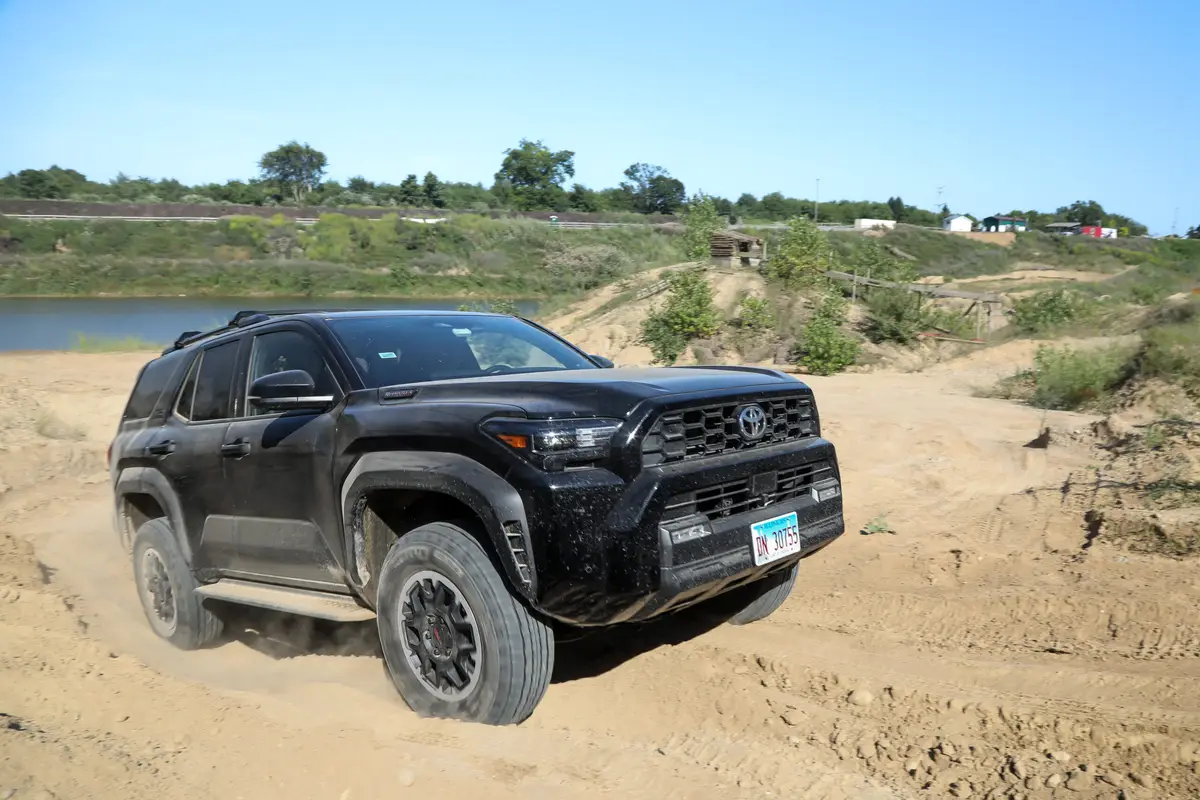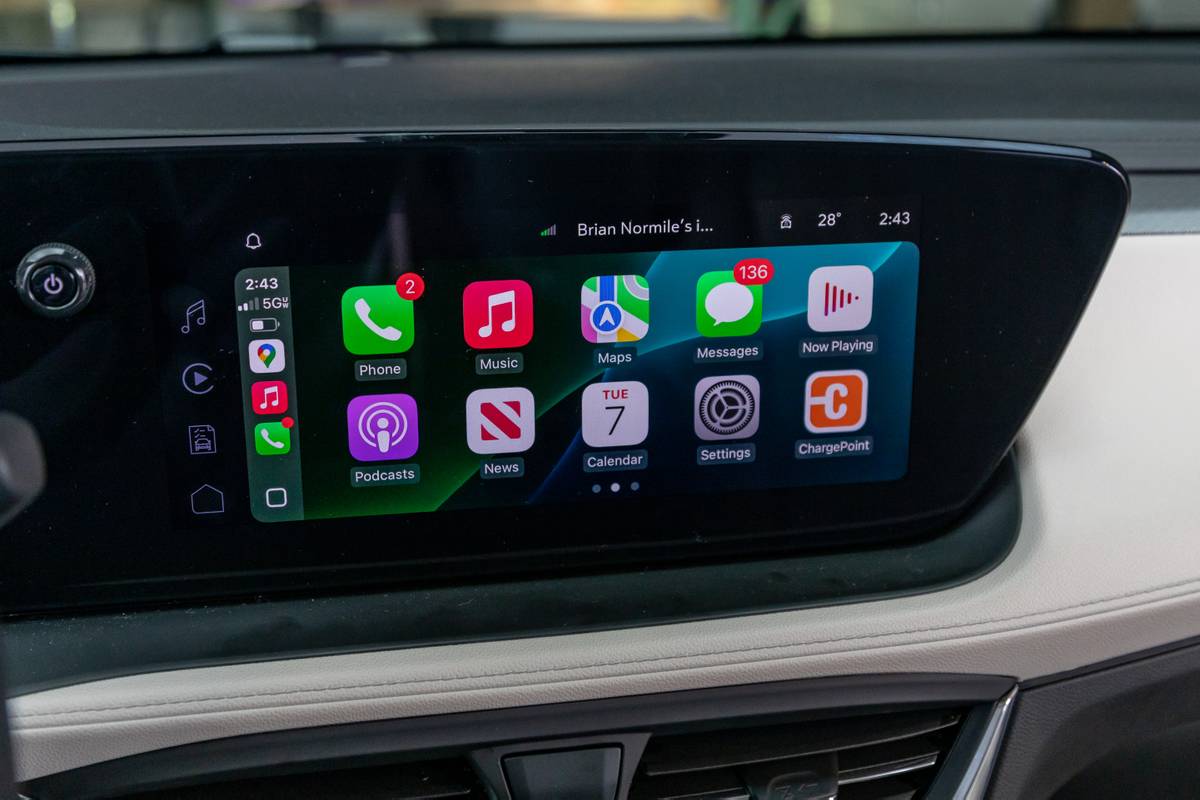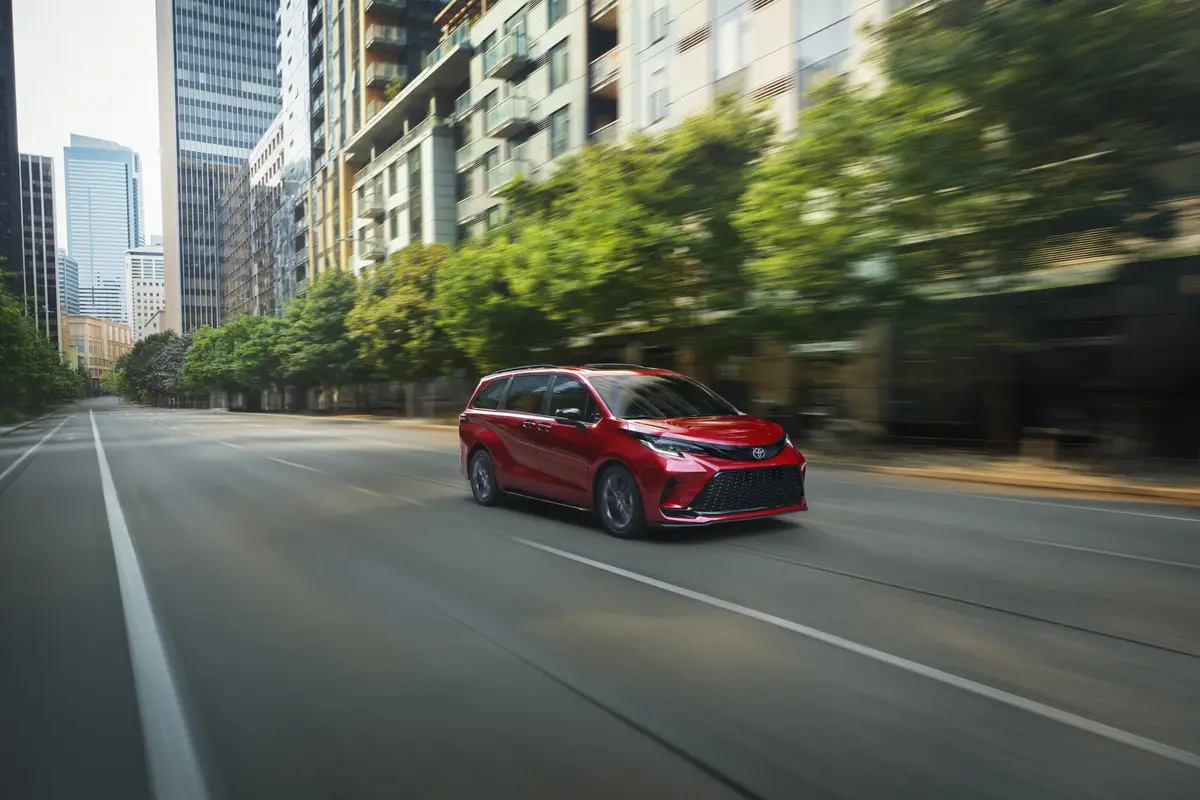Star-Telegram.com's view
Not everyone can afford a car like the $67,400 Jaguar XJR sedan. But after a few minutes behind the wheel of this baby, some of you just might start running some numbers though your head to see if you could somehow pull it off.
Perhaps you don’t really need that bigger house, fancy motor home or sleek new sailboat after all — especially with the XJR beckoning.
Besides, everyone has to have a car, so why not make it a nice one — a really nice one that costs just slightly more than the most expensive Lexus, but has oh so much more curb appeal.
For 1998, the XJR has a lot more than curb appeal, however. The British have redesigned the XJ sedan line for 1998, retaining the distinctive exterior that appeared in 1995 but completely replacing the mechanical components and interior.
The Jagaur XJR steering column.
The mechanical components include the all-new 4.0-liter V-8 engines that replace last year’s inline-six and V-12 of the former XJ6, XJR and XJ12.
Base, extended-length and uplevel Vanden Plas models get the normally aspirated V-8 with 290 horsepower and 290 foot-pounds of torque, with list prices beginning at $54,750.
Our top-of-the-line XJR came with a supercharged version of the V-8, rated at a whopping 370 horsepower and 387 foot-pounds of torque. That’s enough power to propel the XJR from zero to 60 mph in 5.4 seconds, which Jaguar says makes the vehicle the fastest production automatic-transmission sedan sold in North America. (Lexus makes the same claim for its new GS 400 sedan. I haven’t put them side by side to see who’s telling the truth but my money is on the Jag.)
To give you an idea about how powerful this car is: Flooring the gas pedal gives you the feel of a jet racing down the runway toward takeoff — not just any jet, but the supersonic Concorde.
The speedometer goes to 170 mph, but top speed is electronically limited to 155 mph, just 5 mph more than the XJ8. But the big difference in the engines is noticeable at lower speeds, when you’re in a passing situation. On the freeway when you’re ready to change lanes, you merely point the XJR toward an open spot just ahead of you and goose the pedal; nothing is going to catch you from behind.
XJ8 models get a Jaguar-built five-speed automatic transmission. But to handle the extra power of the XJR’s engine, Jag uses a five-speed Mercedes-Benz automatic in this model.
The quality of the mechanical and electrical components of the new XJ cars is supposed to be much improved, thanks to the efforts of Ford Motor Co., which now owns Jaguar. One of Jag’s biggest problems in the past was a really poor-quality electrical system, but the new system was redesigned by Ford to have fewer splices and much higher reliability.
The redesigned interior is elegant by anyone’s standards, with generous use of Connolly leather on seating surfaces and a highly polished bird’s-eye maple wood trim on the dash, console and doors of the XJR (other models get walnut trim).
Seats are comfortable — especially the well-padded front buckets with 12-way power adjustments. The rear seat is roomy enough for three full-size adults, with ample leg and head room despite the low-profile roof of the XJ series.
Not everything was perfect with the interior ergonomics, however. Every time I put the key in the ignition, my hand bumped the windshield wiper switch into the “on” position; the parking brake lever sticks out to the right of the driver’s right leg and pressed into my leg rather uncomfortably while I drove; and the transmission was difficult to get all the way into “park” on first try. To remove the key from the ignition, I had to push on the transmission lever a second time to jiggle it all the way into park.
These are rather minor annoyances but they shouldn’t be there in a car that costs this much.
Although the XJ is almost entirely new for 1998, Jaguar wisely retained most of the exterior styling from the previous generation, includin he signature grille and four-headlight arrangement. The beautiful jaguar hood ornament still reigns over the front end.
Design differences in the XJR from the XJ8 include 18-inch five-spoke wheels with ultra-low-profile tires and a distinctive mesh radiator grille that dates to the classic Jags of the 1930s.
High-technology abounds. The XJR comes with automatic traction control, four-wheel antilock brakes, speed-sensitive rack-and-pinion power steering, front and side air bags for the two front occupants, and a Harman Kardon 240-watt AM/FM/cassette audio system with trunk-mounted six-disc CD changer.
The ride is smooth and virtually bump-free, thanks in part to the front double-wishbone suspension. The interior is whisper-quiet at highway speeds because of generous use of sound-deadening materials throughout the body.
Road handling isn’t as good as that of a good sports car, but for a two-ton sedan, it’s more than adequate. The vehicle is fun to drive on curves, holding the road very well.
Standard amenities include automatic air-conditioning, power tilt-and-slide sun roof, tilt-and-telescopic steering column, memory system for seat and mirror positions, front and rear fog lights, engine-immobilizing security system, automatic headlights and a built-in garage-door opener.
EPA fuel-economy estimates are amazingly high for such a powerful engine: 16 miles per gallon in the city and 21 on the highway. Still, the car carries a $1,000 U.S. gas-guzzler tax built into the list price. The tank holds 21.4 gallons.
Total sticker on our test car, which came with no options (it didn’t need any), was $67,980, including transportation.
Latest news



